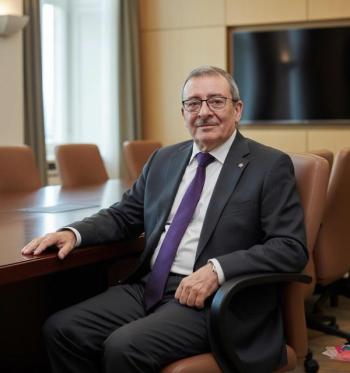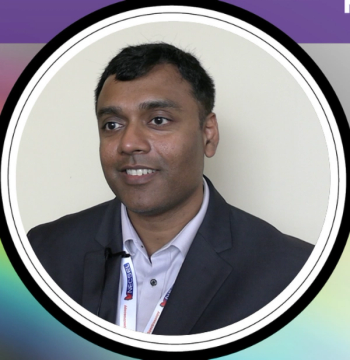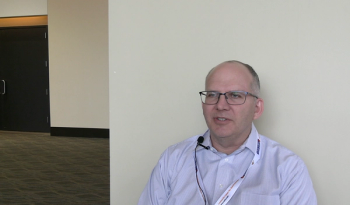
Advances in Table-Top Extreme Ultraviolet Second Harmonic Generation
The limited availability of table-top extreme ultraviolet (XUV) sources with adequate fluxes and coherence properties has resulted in a lack of nonlinear XUV and X-ray spectroscopies to free-election lasers (FELs). Michael Zuerch of the Department of Chemistry at the University of California, Berkeley, along with colleagues from ten laboratories across three countries, has conducted the first extreme ultraviolet second harmonic generation (XUV-SHG) experiment above the Ti M edge (32.6 eV), also representing the first table-top demonstration of SHG at photon energies beyond the UV regime.
The limited availability of table-top extreme ultraviolet (XUV) sources with adequate fluxes and coherence properties has resulted in a lack of nonlinear XUV and X-ray spectroscopies to free-election lasers (FELs). Michael Zuerch of the Department of Chemistry at the University of California, Berkeley, along with colleagues from ten laboratories across three countries, has conducted the first extreme ultraviolet second harmonic generation (XUV-SHG) experiment above the Ti M edge (32.6 eV), also representing the first table-top demonstration of SHG at photon energies beyond the UV regime. It is Zuerch and his associates’ hope to open up more accessible opportunities for the study of element-specific dynamics in multicomponent systems. Zuerch spoke to Spectroscopy about this experiment, his findings, and what it may mean in the advancement of table-top XUV sources.
The abstract of your paper (1) states that the lack of available table-top extreme ultraviolet (XUV) sources with high enough fluxes and coherence properties has limited the availability of nonlinear XUV and X-ray spectroscopies to free-electron lasers (FELs). Would you explain the significance of this to our readers? What challenges have these limitations created for X-ray spectroscopists?
The most prevalent type of table-top XUV and X-ray source is based on the high harmonic generation process, where high harmonics of an optical beam are produced via nonlinear interaction with a noble gas. While HHG-based sources have been instrumental in enabling femtosecond- to attosecond- tabletop experiments, typical XUV fluxes are in the picojoule regime. This is sufficient for performing many types of linear XUV spectroscopic measurements (for example, absorption and reflectivity), but is insufficient for nonlinear techniques that scale with the XUV intensity quadratically, or sometimes even cubically. As such, many common nonlinear spectroscopic techniques performed with optical lasers (such as second harmonic generation, four-wave mixing, and sum frequency generation) are underdeveloped in the XUV. However, these techniques have been extremely successful in the optical regime for the study of material properties, as they are highly sensitive to intrinsic symmetries and for the upconversion of light pulses to generate sources with new frequency outputs. For example, one of the most important applications of optical and near-infrared nonlinear spectroscopy is in measuring surface chemistry at inversion symmetry broken surfaces.
It is therefore promising that nonlinear spectroscopies in the XUV would be a highly fruitful development, in large part because the unique properties of X-rays (shorter wavelengths, energies that can access core-level states) will be able to provide new insight that optical beams cannot. In this regard, the development of FELs has been a game-changer. In an FEL, high-intensity, coherent femtosecond X-ray pulses spanning the XUV to hard X-ray regimes are produced by the acceleration of electron bunches through magnetic undulators in kilometer-long linear accelerator. Experiments at FELs in the last 10 years have made, for example, the generation of X-ray transient gratings and nonlinear X-ray spectroscopies possible.
Nonetheless, there are only a handful of FELs worldwide that are extremely expensive to build, operate, and travel to. The high competitiveness to obtain beamtimes make performing experiments challenging and impractical for routine experiments. As spectroscopists studying matter under various conditions, we also often like to put our samples in carefully prepared environments, such as, a strong magnetic field or cooling the sample to ultralow temperatures. FEL facilities are getting better in providing such specialized environments, but often one would like to prepare the sample environment and control parameters more carefully during the experiments. Think for example of low temperatures and adding bond wires to run a current across a material while conducting nonlinear X-ray experiments to study how this changes the properties of the matter. Such sophisticated experimental conditions can rarely be met at FEL beamtimes that often only last a few days and have little wiggle room for trial and error. The development of high single-shot photon flux table-top XUV sources is therefore exciting, and our work demonstrating SHG on such a source shows that typical intensities at these sources are comparable to FELs, and thus will provide a cheaper, more practical platform on which to perform nonlinear X-ray spectroscopic measurements. For comparison, the laser infrastructure we used in our experiments fits into one larger lab room and is from a cost perspective in reach for typical university laboratories.
So, the advantages of XUV-SHG spectroscopy, to summarize, are:
- The ability for spectroscopic access to surface/interface layers (~specific 1-3 atomic layers) specific to an atomic species (and to “see” what the electronic structure/landscape at an interface looks like for a specific atom in a lattice);
- Access to buried layers due to high penetration depth of XUV and X-rays. Think of two 100 nm slabs of materials sandwiched; XUV-SHG can shine through and measure exactly only the atomic layer where the materials touch despite all the light traveling through both slabs. In linear spectroscopy, one would only see the signal from the bulk slabs (thousands of atomic layers).
- Since the SHG signal stems from symmetry-breaking, XUV-SHG can also access symmetry-breaking properties within the unit-cell of a material; one can, for example, measure the dielectric environment of an atom that is in a symmetry-broken state. This is important because symmetry-breaking leads to many important properties (superconductivity, magnetism, etc.,), and in many cases, we want to better understand why a material even stabilizes in a certain symmetry-broken state. Being able in complex materials with 4-5 atomic species, to zero in on the one atom that actually breaks the symmetry is a significant advantage.
Your paper reports on the first extreme ultraviolet second harmonic generation (XUV-SHG) experiment above the Ti M edge (32.6 eV), which also represents the first table-top demonstration of SHG at photon energies beyond the UV regime. Were there any previous efforts that you found especially useful in advancing your work to this level?
Absolutely. Our group is heavily involved in developing XUV-SHG. This technique is still fairly young and has been demonstrated at an FEL facility source for the first time just in 2018 on carbon films (2). This first demonstration got me very excited about these new capabilities, and my group joined the efforts in that area. Aside from surface-specificity of XUV-SHG, it is highly promising for studying buried interfaces due to the high penetration depth, elemental selectivity, and interfacial sensitivity, while providing electronic structure information that is sensitive to chemical bonding, symmetry, and weaker interactions such as hydrogen bonding. In a series of FEL experiments applying XUV-SHG, we were able to quantify the interfacial bond geometry of an organic-inorganic interface with a precision of 0.1Å (3). In addition, we studied the second-order phase transition in a symmetry-broken polar metal and monitored the displacement of the alkali metal ions within the unit cell of the atomic lattice using XUV-SHG (4). Measuring the angular distribution of SXR-SHG has enabled additional sensitivities such as to the nature of the symmetry state itself (5).
It is, therefore, fair to say that we laid the groundwork for the table-top XUV-SHG by developing XUV-SHG at facility sources. That also lead to the motivation of seeking ways to get more access as (2-5) constitute a year’s worth of applying for beamtime and traveling to facilities with large teams to conduct the experiments that were each compressed into just a few hours at a time. I would estimate that the total experimental time for these results is in the order of two weeks non-stop measurement distributed over three years. That made us imagine what we could achieve if we were able to do this all day every day in the lab and in sample environments more adopted to the chemical problem.
Briefly describe your discovery and development process, and how this differed from what was previously done by yourself or others.
For conducting the experiments, we teamed up with colleagues at the Laboratoire d'Optique Appliquée (LOA) in Paris, France. They deserve the full credit for building this extraordinarily powerful laser-drive XUV source over many years. Considering previous works, we have had already several past successful collaborations with our French colleagues. In (6), we demonstrated a novel approach to image laser-plasma interaction in hot dense plasmas and established an ab initio multi-scale model to describe the interactions. The findings have direct implications for upscaling plasma-based XUV and X-ray sources and allow modeling light-plasma interactions under extreme conditions, like those of the early times of the universe, with direct experimental verification. We used the same intense XUV laser source for the experiments as in the XUV-SHG table-top experiment.
Ultimately, the idea to attempt a first XUV-SHG experiment using the table-top system came from having conducted successful experiments at LOA and FEL XUV-SHG experiments. The table-top XUV-SHG is, thus, really a culmination of several years of efforts of developing XUV-SHG at FEL facilities and establishing collaborations across many research groups. The team at LOA was extremely invested in the experiments spending a lot of time optimizing and characterizing their source as well as building the experimental end station to the needs of the experiment. I should also mention, that during all of these experiments, we established strong collaborations with theory groups, for example, the Pascal Group at UC San Diego, who became a leader in calculating XUV-SHG spectra for various materials and have made predicting experimental parameters that would ultimately lead to successful experiments.
I would add that in the table-top XUV, that is the high harmonic generation, community there has been a trend the last years to go to high average power XUV sources particularly for high-resolution imaging applications. That is driven by interest in applications in the semiconductor industry. In this case, high average power is achieved by going to very high repetition rate with hundreds of thousands of XUV shots per second. This has become a solid route to create sources that achieve unparalleled average flux per second. However, to do nonlinear spectroscopy, one really needs high flux in a single shot. So rather than high average power, we needed a source that achieves very high peak power with less importance on average power. That is how the source at LOA is quite unique in that is operates at only one or very few laser shots per second but can create single pulses with orders of magnitude higher peak power compared to conventional high harmonic sources. While the peak power or pulse energy is important, what really matters for nonlinear spectroscopy is the intensity on the sample. Hence, besides a high energy, the pulses need to be short (tens to hundreds of femtoseconds) and focused to a as small as possible focal spot. Here our colleagues of LOA built a focusing geometry using an ellipsoidal mirror that enables creating very tight XUV focal spots with only a few micrometers focal spot diameter. There are only very few groups having this capability. That is largely because the ellipsoidal optics operating at grazing incidence (to avoid reflection losses) are very expensive and extremely difficult to accurately align. Compared to more standard optics, such as toroidal optics often found in HHG beamlines, the ellipsoidal mirror has to be much more accurately aligned. That comes with the challenge of how to characterize a XUV focus. All in all, the setup at LOA became worldwide unique at the time of the experiment in the combination of very high pulse energies achieved as well as tight focusing geometry. These accomplishments were achieved just in time when we had first results from FEL XUV-SHG and could estimate that the LOA instrument might be able to achieve sufficient intensities. So, we ultimately proposed experiments on titanium foils and a few months later a team of us teamed up in Paris for a two-week experimental campaign conducting the experiments.
Were there any particular challenges you encountered in your work?
One of the biggest challenges when planning XUV-SHG experiments is that very little is known about the nonlinear optical properties of materials in the XUV. There is no database, like in the optical regime, where one could go to and look up what the expected strength of response of a material would be. This leaves us often with extrapolating from one material we already measured to another one that has a similar structure. For example, we conducted successful XUV-SHG experiments on lithium osmate (LiOsO3) that led to other experiments in lithium niobate (LiNbO3) that also worked well. The only source of other information we have are theory simulations. However, these calculations are computationally expensive and require access to supercomputers such as the NERSC supercomputer here at the Lawrence Berkeley National Laboratory that we regularly use for XUV-SHG calculations. It is often a weigh-off process how much preliminary calculations we can afford to estimate whether an experiment will potentially work. A challenge specific to the table-top XUV-SHG work is that one operates very close to the damage threshold of the samples to observe XUV-SHG. This requires moving the sample around to have a pristine sample area for each laser shot. Another challenge is that one must very carefully monitor the incoming XUV laser beam and the signal after the interaction with the sample, as only the correlation of the two signals yields a high-quality XUV-SHG spectrum.
What sort of feedback did you receive regarding this work?
The feedback has been very positive. Our results (I am referring to the larger body of XUV-SHG work) have drawn significant attention in the community and led to invited contributions at conferences, institute seminars and nonlinear X-ray workshops held at Stanford/SLAC and the Paul-Scherrer-Institute. We also received an award in the highly competitive UC MPRI Program, where our group will lead a team of UC researchers in the California Interfacial Science Initiative that seeks to expand interfacial X-ray studies to working battery systems and liquid-interfaces. Just recently, I was awarded the Fresnel Prize by the European Physical Society that is given every two years to a researcher under age 35 that specifically mentioned my contributions to nonlinear spectroscopies in the X-ray domain.
What are the next steps in this research?
We are having several upcoming beamtimes at FEL facilities to expand our research towards new materials using XUV-SHG. One big goal is to conduct time-dependent studies where we would like to see how matter changes its properties away from equilibrium and use the unique sensitivities of XUV-SHG to study changes of symmetry or charge transfer at interfaces. From our first demonstration of table-top XUV-SHG, we are also optimistic to be able to build our own laboratory infrastructure tailored to such experiments in the near future.
References
- T. Helk, et al., Science Advances 7(21), eabe2265.
- R.K. Lam, et al., Phys. Rev. Lett. 120, 023901 (2018).
- C.P. Schwartz, et al., Phys. Rev. Lett. 127, 096801 (2021).
- E. Berger et al., Nano Letters 21, 6095-6101, (2021).
- C. Uzundal, et al., arXiv:2010.03134 (2021), in print Phys. Rev. Lett..
- F. Tuitje, et al., Light: Sci. App. 9, 187 (2020).
Michael Zeurch studied physics at the Friedrich Schiller University in Jena, Germany, and finished the diploma with honors in 2010. He then joined the research group of Christian Spielmann at Jena University working on high-resolution imaging with laser-driven extreme ultraviolet sources based on high harmonic generation and various projects involving nonlinear optics. In 2014 he finished his Ph. D. (Dr. rer. nat.) with summa cum laude. Subsequently, a Feodor Lynen Fellowship by the Alexander von Humboldt Foundation allowed him to move to the University of California at Berkeley where he joined the research groups of Stephen Leone and Daniel Neumark in the College of Chemistry in 2015. The research at UC Berkeley was focused on studying carrier and lattice dynamics at highest temporal resolution using attosecond extreme ultraviolet sources. Besides classical semiconductor materials, the research pushed the limits in studying two-dimensional materials and magnetic nanomaterials. Following another short stay at Jena on independent funding, in 2018 Michael joined the Department of Chemistry of the Fritz Haber Institute as an independent Max Planck Research Group leader. In 2019 Michael joined the faculty at the University of California at Berkeley in the Department of Chemistry. In 2020 Michael was in addition appointed as Faculty Scientist at the Lawrence Berkeley National Laboratory. His research group at UC Berkeley focuses on the experimental investigation of structure and dynamics of complex, correlated solid-state materials. Specific areas of interest are the observation and control of collective phenomena between entities such as excitons, magnons and phonons, chemical material dynamics at surfaces and interfaces, symmetry-broken states and their emergence, and dynamical properties in artificial and correlated superlattices. To this end, my group develops new physical chemistry methods to directly measure and manipulate such systems away from equilibrium and push the limits of temporal and spatial resolution at the molecular level. His research has won him numerous awards, including the Fresnel Prize, the Hellman Fellowship, and a W. M. Keck Award.
Newsletter
Get essential updates on the latest spectroscopy technologies, regulatory standards, and best practices—subscribe today to Spectroscopy.




